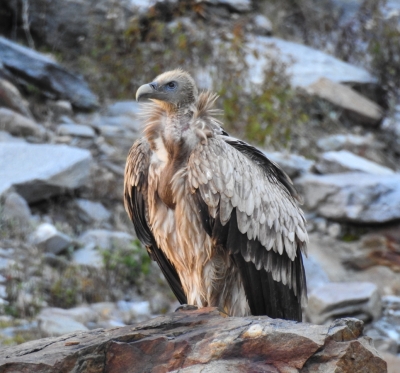
Perhaps the largest and heaviest bird found in the Himalayas, the Himalayan vulture, or Gyps himalayensis, belongs to the family Accipitridae.
It has a bald white head, wide wings and short tail feathers. Its neck ruff is white and it has a yellow bill. It is the second largest Old World vulture after the cinereous vulture. Adults can weigh up to 12 kg and have a wingspan of 270 to 300 cm.
Also called the Himalayan Griffon, these vultures are found in the higher regions of the Himalayas and the Tibetan plateau. They prefer rocky regions and mountain peaks and are found at altitudes between 1,200 and 5,500 metres in Kazakhstan, Uzbekistan, Kyrgyzstan, Tajikistan, Afghanistan, Iran, Pakistan, Nepal, Bhutan, western China, Mongolia and India. Rarely seen near human settlements, they mainly feed on the carcasses of large mammals like domestic yak. They live in small colonies and dominate feeding areas, preventing other vultures (except the larger cinereous vulture) from sharing a carcass. They are noted for feeding on human corpses left as a part of ‘sky burial’ practised in Buddhism.
Himalayan Griffons build nests from sticks on inaccessible cliffs and ledges. Several pairs of vultures may share the same cliff face. The female lays a single white egg, marked by red splotches. The incubation period of this bird is 54-58 days.
They are vulnerable to Diclofenac, a drug whose residues in domestic animal carcasses have led to rapid declines in populations of many vulture species across Asia. The Himalayan griffon is listed as ‘Near Threatened’ on the IUCN Red List.
Picture Credit : Google




